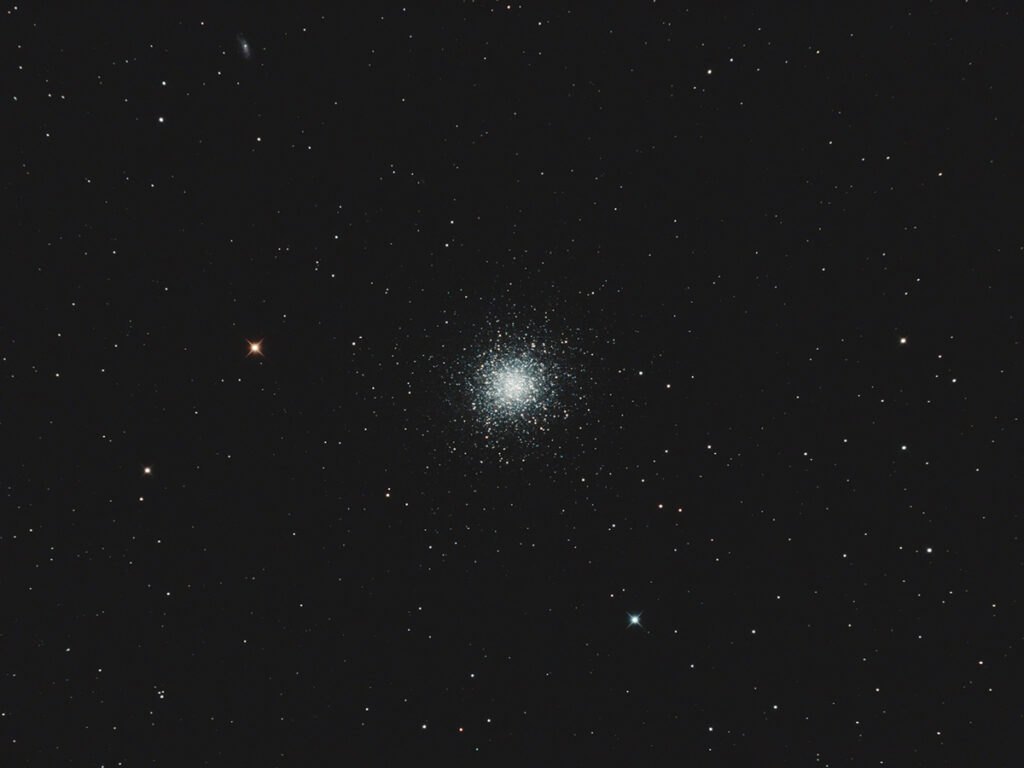
Telescope: Astro-Tech 8” f/8 Ritchey-Chretien, Orion Atlas EQ-G
Camera: Canon EOS Ra, Baader Mk III MPCC
Filter: Orion Imaging Skyglow Filter
Guide scope: Astro-Tech 60mm, Starlight Xpress Super Star, PHD2
Exposure: (18 + 29)x60sec, ISO 800, saved as RAW
Darks: Internal (Long Exposure Noise Reduction On)
Flats: 32×1/25sec, Tee shirt flats taken at dusk
Average Light Pollution: Red zone, Bortle 8, poor transparency, haze
Lensed Sky Quality Meter: 18.4
Stacking: Mean with a 1-sigma clip.
White Balance: Nebulosity Automatic
Software: Backyard EOS, Deep Sky Stacker, Nebulosity, Photoshop
Globular clusters are relics of the ancient universe and M13 is no exception with an estimated age of 12 billion years. Their great age is an indication of their unusual stability. One consequence of this stability is that any heavy elements that their stars have made remains buried in their cores and the cluster itself has little, if any, interstellar dust. M13 is one of the few globular clusters with a dust-like feature that can be seen as a dark lane extending to the lower left of the core. It is possible that this dust lane is not really associated with M13, but instead is an independent object that just happens to be in front of the cluster.
This is the first-light image taken with my shiny new Canon EOS Ra. The weather really hasn’t cooperated yet, so I combined two sets of source images taken on the evenings of June 26th and July 2nd. One thing that I noted is that even though the sensor was very warm (33-47C) all of the source images were very clean with no hot or cold pixels. Being a mirrorless camera the shutter was smooth and quite. This was one feature that I was particularly interested in after having a few problems with the relatively heavy and complex mirror system in my Nikon D610a. I do luvs the Nikon, but I was curious enough about the performance of a modern mirrorless camera to give the EOS Ra a try. I was also fascinated by the idea of using a full-frame DSLR specifically made for astrophotography and I have enjoyed my previous Canon cameras. So far I am really liking the new camera! It was very easy to integrate into my imaging gear and has been very easy to use. Wonderful!
M13 is currently well placed high in the northeast as the sky darkens.
Recent Comments